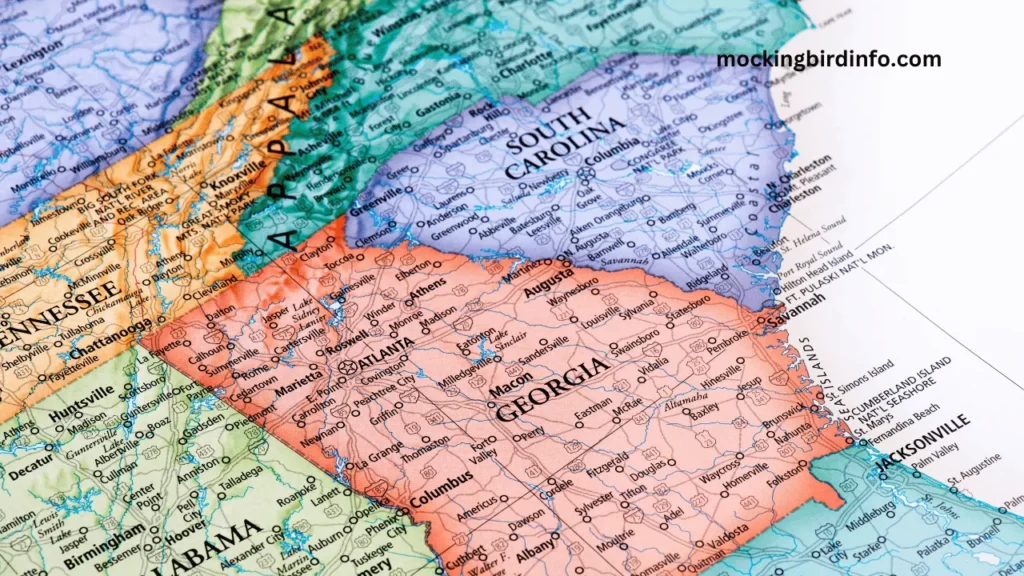There’s something enchanting about the melodious songs of mockingbirds as they echo through the air. Known for their ability to imitate other birds and even mechanical sounds, mockingbirds are a source of fascination for birdwatchers and casual observers alike.
Their territorial behavior, marked by aggressive defense of their nests, only adds to their mystique. But beyond their captivating songs and bold presence, there’s an interesting question to ask: What states have mockingbirds?
Understanding where these iconic birds thrive can shed light on their fascinating behaviors and their adaptability to different environments. Mockingbirds are not just residents of any state; their distribution reveals a deeper connection with the regions they inhabit.
Predominantly found in the southern and eastern United States, these birds have expanded their territory, even venturing into parts of Mexico and Central America. But what factors shape their habitat choices, and why do they favor specific areas?
In this article, we will explore the geographic distribution of mockingbirds, their habitat preferences, and how human activities play a role in their expansion. From their core range to the impact of climate change, we’ll delve into the factors influencing the spread of mockingbirds.
As we navigate their migration patterns and conservation efforts, we’ll uncover why these birds remain a symbol of resilience in the face of environmental challenges. Join us as we explore the states where mockingbirds reside, and discover the beauty of their adaptability.

Contents
Geographic Distribution
Core Range: Mockingbirds are most commonly found in the southern and eastern United States, including states such as Texas, Florida, Louisiana, and parts of the Midwest.
Their natural habitat stretches from the Gulf Coast up to parts of Virginia, marking their territory as one of the most widespread in North America. This extensive range gives them access to a variety of climates and environments, making them adaptable to a range of habitats.
Western Expansion: Over the 20th century, the mockingbird’s range expanded westward, particularly in response to urbanization and the increasing availability of human-modified landscapes.
They have now been spotted as far west as California and parts of Nevada, where they thrive in suburban areas with abundant food sources and nesting sites. This expansion is largely due to the adaptability of mockingbirds to human-altered landscapes, including cities, farms, and roadsides.
Mexican and Central American Range: Mockingbirds are not just confined to the United States. Their range extends into Mexico and Central America, where they inhabit diverse environments such as desert scrublands, coastal areas, and tropical forests.
In countries like Mexico, Guatemala, and Costa Rica, mockingbirds are an integral part of the avian landscape, showing a remarkable ability to adjust to different ecological zones.
Habitat Preferences
Urban Environments: One of the most notable aspects of mockingbirds is their remarkable ability to thrive in urban environments. Cities and suburbs offer abundant food sources, such as insects, berries, and small fruits, while trees and rooftops provide suitable nesting sites.
Their presence in urban areas makes them easy to spot in places like parks, golf courses, and neighborhoods, where their songs are a familiar part of the cityscape.
Rural Landscapes: While they are well-suited for urban living, mockingbirds also prefer more rural landscapes, where they can enjoy a diverse range of habitats. Woodlands, open fields, agricultural lands, and even scrubby deserts provide the ideal conditions for nesting and foraging.
In rural areas, they have access to a variety of natural food sources, such as insects, berries, and small reptiles, which play a key role in their diet.
Coastal Areas: Along the Gulf Coast and the Atlantic Coast, mockingbirds are frequently spotted in coastal habitats, where they enjoy a slightly more temperate climate and access to food sources like insects and fruits.
These coastal environments also provide ample space for nesting and territorial defense, making them a favorite for mockingbirds in southern regions.

Factors Influencing Distribution
Climate: The mockingbird’s distribution is influenced by its ability to tolerate warm and humid climates. While they are found as far north as the Midwest, their preference for warmer temperatures means they are rarely found in colder climates.
During winter months, mockingbirds are known to migrate south to avoid harsh cold. Their ability to adapt to a range of temperatures, however, allows them to thrive in varying climates across North America.
Food Availability: Mockingbirds are omnivores, and their diet plays a major role in their distribution. They rely on a variety of food sources, including insects, fruits, and even small animals.
The availability of these food sources influences where mockingbirds can establish territories, as they prefer areas rich in natural resources that support their diverse diet. Urban environments with abundant food sources have also contributed to their range expansion.
Human Activities: Human influence has played a key role in the expansion of mockingbird territories. Urbanization has created a favorable environment for these birds, providing ample nesting sites and food sources.
At the same time, deforestation, climate change, and habitat destruction have had mixed effects on the species. While some human activities have facilitated their spread, others have threatened their habitats, making it critical to understand the impact of conservation efforts.
Conservation Status
Population Trends: The population of mockingbirds has remained relatively stable in recent years, with their numbers fluctuating based on seasonal migrations and weather conditions.
However, threats like habitat destruction, pesticides, and climate change could affect their long-term survival. Conservation efforts are crucial to ensure that mockingbird populations remain stable.
Conservation Efforts: Efforts to protect mockingbirds include habitat restoration, environmental protections, and programs that promote sustainable land management. Several conservation groups are dedicated to preserving the habitats that mockingbirds depend on, ensuring that future generations can enjoy their songs and vibrant presence.
The Role of Citizen Science: Citizen science programs, such as bird watching and data collection on nesting sites, have become essential tools for understanding mockingbird populations. By contributing to these efforts, individuals can help track the movement of mockingbirds and contribute to their conservation.
Conclusion
Mockingbirds are more than just charming creatures with unique songs. Their distribution across the southern and eastern United States, expanding into parts of Mexico and Central America, reflects their adaptability and resilience.
From their ability to thrive in urban environments to their preference for diverse habitats, mockingbirds are a testament to nature’s capacity for adaptation.
The future of these birds, however, is uncertain. As climate change, urban expansion, and habitat loss continue to reshape the landscape, the role of conservation efforts and public involvement will be vital in ensuring their continued presence in our backyards and forests.
Mockingbirds, with their striking songs and territorial behaviors, offer a glimpse into the beauty of the natural world—one that deserves to be protected and appreciated.
FAQs
1. What states are mockingbirds most commonly found in?
Mockingbirds are primarily found in southern and eastern states, including Texas, Florida, and parts of the Midwest like Missouri and Illinois.
2. Do mockingbirds live in cities?
Yes, mockingbirds are highly adaptable and can be found in urban environments, especially in cities and suburbs with plenty of food sources and nesting opportunities.
3. Why have mockingbirds expanded their range westward?
The expansion of mockingbirds to the west has been driven by human activities, such as urbanization and the availability of new habitats in agricultural lands and suburban areas.
4. Are mockingbirds found in Mexico?
Yes, mockingbirds are found in Mexico and parts of Central America, where they live in diverse habitats ranging from desert scrublands to tropical forests.
5. What do mockingbirds eat?
Mockingbirds are omnivores, eating a wide variety of food, including insects, berries, and small reptiles.
6. How do mockingbirds adapt to different climates?
Mockingbirds are well-suited for warm, humid climates, but can tolerate cooler temperatures in certain regions. They migrate south during the winter months to avoid cold weather.








